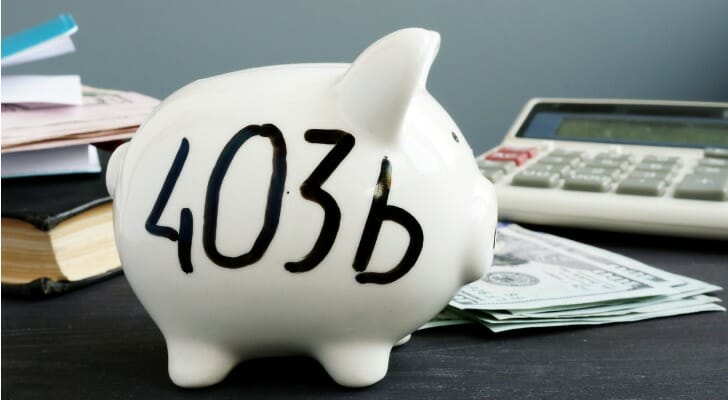In an effort to streamline the regulation that governs how retirement accounts can be used, the IRS has proposed a change for 403(b) plans — a type of workplace retirement plan used mostly by public and non-profit employees. Employer-sponsored plans are powerful retirement tools and boast specific requirements regarding required minimum distributions and tax treatment that vary depending on the type of account. But soon your 403(b) may resemble the more-common 401(k). If you have a 403(b) retirement plan, you might need to change how you’ve planned for retirement and how your plan beneficiaries will receive their funds. Here’s what you need to know.
A financial advisor could help you plan for retirement and select investments that align with your financial goals. Speak to a qualified advisor today.
Don’t miss out on news that could impact your finances. Get news and tips to make smarter financial decisions with SmartAsset’s semi-weekly email. It’s 100% free and you can unsubscribe at any time. Sign up today.
IRS Proposes 403(b) RMD Changes
In accordance with the Setting Every Community Up for Retirement Enhancement (SECURE) Act of 2019, the IRS is proposing updates to the existing retirement plan code that governs required minimum distributions (RMDs).
Currently, 403(b) plans are still treated differently from 401(k) plans, with provisions that trigger special exemptions for the non-profit and service-sector organizations that sponsor these plans for their employees. The IRS has historically not required 403(b) account holders to withdraw all their funds over their lifetime and allowed savers to invest in a wide variety of financial products with tax-deferred dollars. If a saver has multiple 403(b) contracts, he can take his entire RMD each year out of one contract, potentially allowing him to keep money in the most lucrative of his contracts. With changes ushered in by the SECURE Act, the new rule would require RMDs to be taken out of each contract a person has starting at age 72 based on on published life expectancy guidelines. This is how RMDs work for 401(k) plans, so this new rule would essentially be making 403(b) plans operate like other tax-advantaged plans. (Roth IRAs are the exception.)
If the account owner passes away before the funds are fully distributed, the beneficiary must take all the funds within 10 years of the owner’s passing.
What Retirement Savers Need to Know
To align 403(b) plans with other employer-sponsored and individual retirement plans, the IRS is proposing changes to rules governing RMDs. Going forward, any non-profit sponsoring a 403(b) plan for their employees must take RMDs or risk employees paying a hefty tax penalty on the balance not withdrawn.
The National Law Review notes that the proposed changes appear to pose both administrative and legal challenges. 403(b) plans can be invested in a variety of funds, including both group and individual annuity contracts, and so the requirement to take RMDs could create contractual issues.
For example, employers are not involved in the administration of individual 403(b) contracts, and so their ability to take RMDs would be substantially limited, potentially violating the new rule from the very beginning. Even more unclear, in order to partake in safe harbor exemptions, regulation limits employer involvement in retirement plans to specific activities. If the proposed IRS rule goes into effect and employers must then actively negotiate with providers to administer RMDs for participants, this could be a violation of those requirements and inadvertently subject employers to regulation and reporting from which they were previously exempt.
As a result, employees may not know if or when they may be required to take distributions from their 403(b) plans. The IRS directs plan sponsors to administer RMDs, but ultimately it is the participant’s responsibility to ensure accurate and timely withdrawals. If the participants do not take distributions as required, they may end up owing as much as 50% of their calculated RMD in taxes.
The IRS is reviewing the proposed rule and has asked for feedback. Interested parties may submit comments through the Federal Register portal before May 25, 2022, and a hearing on the regulation will be conducted on June 15.
Bottom Line
The IRS is proposing a new rule to require 403(b) plan participants to take RMDs. The proposed changes may cause administrative and legal difficulties, especially with regard to ERISA-exempt regulations. Penalties for failing to take RMDs can be harsh, so understanding what rules apply to you as a 403(b) plan participant is important. Comments regarding the proposed rule can be submitted through May 25, 2022.
Retirement Planning Tips
- Not sure what investments or strategies will set you up for a smooth retirement? For a solid, long-term financial plan, consider speaking with a qualified financial advisor. SmartAsset’s free tool matches you with up to three financial advisors who serve your area, and you can interview your advisor matches at no cost to decide which one is right for you. If you’re ready to find an advisor who can help you achieve your financial goals, get started now.
- Use SmartAsset’s free retirement calculator to get a good first estimate of how much money you’ll need to retire.
Photo credit: ©iStock.com/designer491, ©iStock.com/nzphotonz, ©iStock.com/Stockphoto4u


